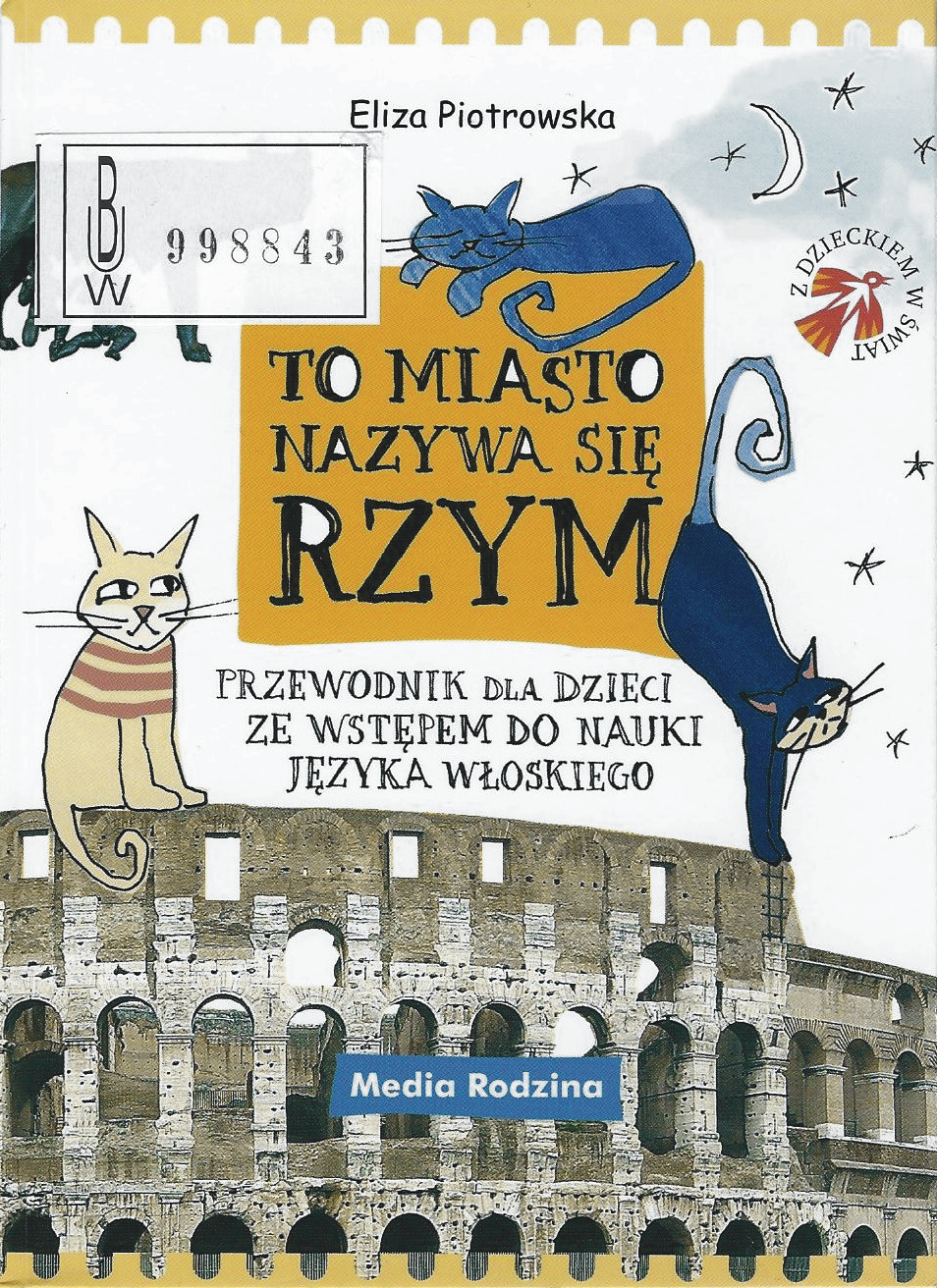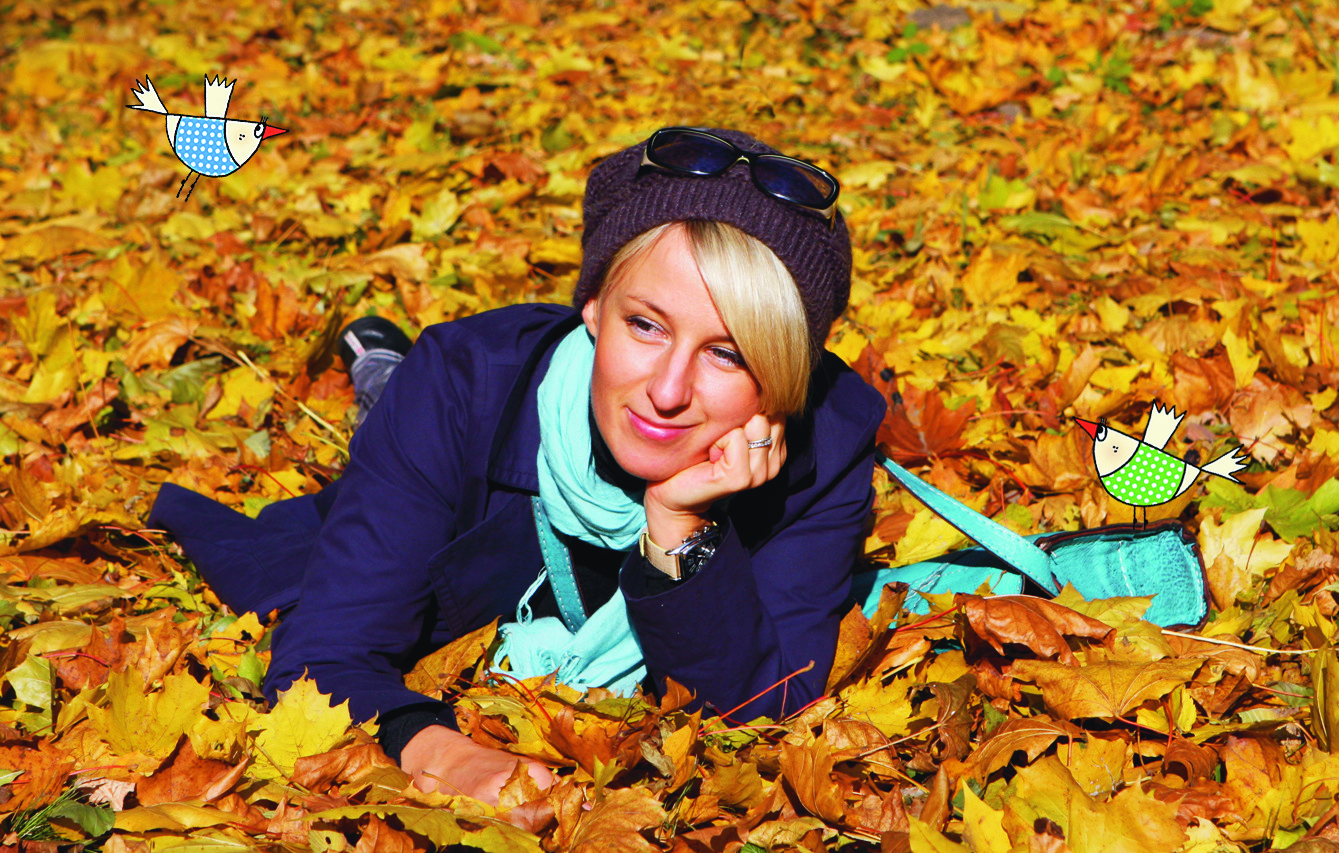Title of the work
Country of the First Edition
Country/countries of popularity
Original Language
First Edition Date
First Edition Details
Eliza Piotrowska, To miasto nazywa się Rzym. Przewodnik dla dzieci ze wstępem do nauki języka włoskiego. Poznań: Media Rodzina, 2008, 64 pp.
ISBN
Genre
Guidebook
Target Audience
Children
Cover

Cover design by Iwona Rybczyńska. Illustrations by Eliza Piotrowska. Photographs by Eliza Piotrowska. Courtesy of the publisher.
Author of the Entry:
Summary: Katarzyna Sendecka, University of Warsaw, katarzyna.sendecka@student.uw.edu.pl
Analysis: Marta Pszczolińska, University of Warsaw, m.pszczolinska@al.uw.edu.pl
Peer-reviewer of the Entry:
Katarzyna Marciniak, University of Warsaw, kamar@al.uw.edu.pl
Elżbieta Olechowska, University of Warsaw, elzbieta.olechowska@gmail.com

Photograph courtesy of the Author.
Eliza Piotrowska
, b. 1976
(Author, Illustrator)
Art historian and critic. Graduated from Adam Mickiewicz University in Poznań and Università La Sapienza in Rome; member of the circle of young poets organized by the famous Polish author for children Danuta Wawiłow. Eliza Piotrowska wrote many prize winning books for children; she is co-founder of the project called Children’s Museum Academy, contributor to Ryms – a quarterly dedicated to children’s literature – and to the now defunct famous Polish magazine for kids – Miś.
Sources:
Official website (accessed: June 26, 2018).
Profile at the Ryms website (accessed: June 26, 2018).
Bio prepared by Ewa Wziętek, University of Warsaw, ewawzietek@student.uw.edu.pl
Summary
Based on: Katarzyna Marciniak, Elżbieta Olechowska, Joanna Kłos, Michał Kucharski (eds.), Polish Literature for Children & Young Adults Inspired by Classical Antiquity: A Catalogue (accessed: June 11, 2021), Faculty of “Artes Liberales”, Warsaw: University of Warsaw, 2013, 444 pp., section by Ewa Wziętek and Katarzyna Sendecka, pp. 288–291.
A tour of Rome for children, focused on the most important landmarks. Starting from Rome’s beginnings and history, going on to the Vatican, Mausoleum of Hadrian [Castel Sant’Angelo], the Trevi Fountain, Forum Romanum, the Colosseum, Bocca della Verità, Pantheon, and other monuments, children are gradually introduced not only to the Eternal City, but also to useful Italian words and phrases plus fun facts about visited places. They learn about pizza, Italian football and gelato [Italian ice cream] as well.
Analysis
The title alludes to a poem for children by Adam Mickiewicz (1798–1855) called Madame Twardowska (Ta karczma Rzym się nazywa [This inn is called Rome]) and very well known to all young and old Poles.
The guide can be considered useful for family travel with children to Rome. It is aimed at younger children which is apparent through both graphic design and the text, which is suitable for young users to have their own guide. The book provides the most important information about Rome for visitors.
It starts ab ovo or rather ab Urbe condita with a traditional fairy tale formula: “once upon a time”, slightly adapted to the story of Rome. In the beginning, the myth of Rome's foundation is told, presenting seven hills of Rome and a she-wolf who lived at the Palatine Hill and during a walk along Lungotevere, found infant twins. The she-wolf is shown as a maternal figure, who takes pity on the foundlings, cares for them, breastfeeds them, bathes them in the river and keeps them warm with her own body. The amusing information is provided in a box under the picture of the Capitoline Wolf statue: the she-wolf has moved out of the Palatine Hill, and now lives in the Musei Capitolini on the Capitoline Hill.
Other references to Roman antiquity are short descriptions of other ancient buildings and remains of monuments, which are not given according to the historical importance, but rather in the order of visiting. Thus the ancient ones are interspersed with baroque monuments and information about food or sport. The first ancient building mentioned in the guide is the Mausoleum of Hadrian, its ancient past and the later change of name. Another building described is the Pantheon; through this information, the child learns about Romans believing in many gods, and what a rotunda and an oculus are. The next few pages contain information about Roman Forum’s function and ruins, also, about the triumphal arches; including the Arch of Constantine, triumphal columns including the Trajan’s Column decorated in relief as a comic book about fights between the Romans and Dacians, the next monument is the Colosseum as an example of amphitheatres. Interestingly, the author adds two pages about animals – mainly cats living in the Flavian amphitheatre and fed by contemporary Romans, and dogs and birds are mentioned too, illustrated with witty drawings. On the next page, the child learns about the possibility of meeting a contemporary “ancient” Roman soldier wearing a watch and carrying a cell-phone in his leather bag. Then the itinerary leads to the Mouth of Truth (Bocca della Verità) presented in the context of Pinocchio and his lies, but the ancient character of the god Oceanus is also recalled. The last ancient place described in the guide are the Catacombs of Rome.
Every location is illustrated with photographs taken by the author and her own colorful drawings in the comic book style. In the end, the mini-guide contains a map with the attractions marked on it; it shows that the route can be completed during a weekend trip; there is also a glossary of Italian words used in the book. The guide can be attractive for children as the information included is really basic, not too abundant, and presented in an amusing form. The Italian words added to the text can be useful during a trip to Italy. The guide encourages children to pose further questions which can be answered using an “adult” guide or individual research.
Further Reading
Piotrowska Eliza, Warszawa zwiedzanie i zabawa, Arkady, 2009.


